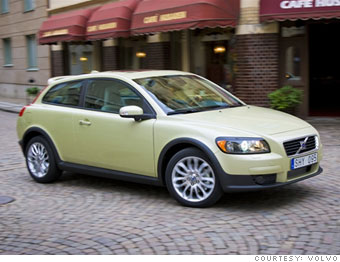
Another big advantage has to do with "packaging." Both the engine and transmission -- which is called a "transaxle" in a front-wheel-drive car -- are in the front, eliminating that big transmission-tunnel hump running down the cabin center of RWD cars.
Without the hump, there's more room. That's why front-wheel-drive is associated with fuel-efficient small cars. It's the best way to get maximum space in a small volume.
But some drivers just hate front-wheel-drive. For starters, it's not a good recipe for weight balance. FWD nose-heaviness can make a car handle badly in corners.
Also, in FWD cars, forces other than your hands on the steering wheel are pushing on the front wheels. "Torque steer," which happens in FWD cars under hard acceleration, makes a car feel as if something is pulling it to one side.
NEXT: Rear-wheel-drive
